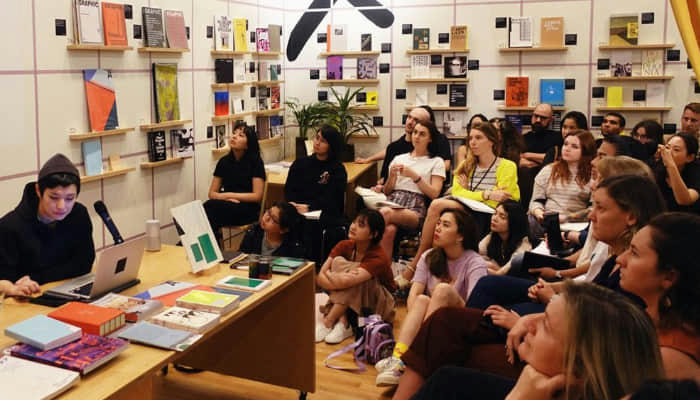Designing Your Future: Exploring a Graphic Design Degree

Have you ever marveled at a captivating logo, a striking magazine layout, or an eye-catching billboard and wondered about the creative minds behind them? This dynamic field merges art, technology, and communication, demanding a blend of artistic flair, technical proficiency, and a passion for visual storytelling.
Whether your interests lie in branding, digital design, or advertising, a graphic design degree equips you with the tools to bring imaginative visions to life. Graphic design is pivotal across industries, impacting marketing, web design, publishing, and more. The demand for skilled graphic designers continues to rise, offering diverse opportunities for those adept at aesthetics and visual communication.
1.Benefits of Obtaining a Graphic Design Degree

Mastering Essential Tools
As you embark on your journey, you'll gain proficiency in industry-standard design software like Adobe Creative Suite. These tools are not just tools but gateways to creating impactful visuals that leave a lasting impression across various media platforms—think stunning logos, sleek websites, and compelling digital campaigns.
Understanding Design Fundamentals
Dive into the world of typography and color theory. Discover how typography can convey mood and message, and learn to harmonize colors to create aesthetically pleasing designs. These skills aren't just about making things look good; they're about crafting visual stories that resonate with audiences on a deeper level.
Unlocking Diverse Career Paths
A graphic design degree opens doors to a multitude of career opportunities. From branding and advertising to web design and multimedia production, your skills will be in demand across industries where visual communication is key. Imagine yourself shaping brand identities, designing user-friendly interfaces, or creating captivating digital content—all with the expertise gained through your degree.
Fostering Creativity and Collaboration
Engage in hands-on projects that challenge your creativity and problem-solving abilities. Collaborate with peers from different disciplines, refining your teamwork and communication skills along the way. These experiences not only enhance your portfolio but also prepare you for the collaborative environments you'll encounter in your professional journey.
2.Types of Graphic Design Degrees
Associate's Degree: Typically completed in two years, this degree offers foundational knowledge in design principles and software skills, ideal for entry-level positions.
Bachelor's Degree: A comprehensive four-year program delving into design theory, visual communication, and project management, providing a broader spectrum of career prospects.
Master's Degree: For specialization and career advancement, this advanced program emphasizes research, critical thinking, and advanced design concepts.
3.Critical Skills Acquired in a Graphic Design Program

In a graphic design program, students acquire a broad and detailed skill set crucial for success in the creative industry:
Visual Storytelling Mastery: Gain proficiency in effectively communicating complex ideas and narratives through visual elements such as photography, illustration, typography, and layout design. Understand how to create visual hierarchies that guide viewers through content and convey messages clearly.
Advanced Software Proficiency: Develop mastery in industry-standard design software such as Adobe Photoshop, Illustrator, and InDesign. Learn advanced techniques for photo manipulation, vector graphics creation, and layout composition across digital and print media.
Typography Expertise: Explore the art and science of typography, mastering principles of typeface selection, kerning, leading, and hierarchy. Learn to use typography creatively to enhance readability, convey mood, and establish brand identity in design projects.
Color Theory Application: Delve into the psychological and cultural impact of colors. Learn how to apply principles of color theory to create visually appealing and harmonious designs that resonate with target audiences. Understand color schemes, contrasts, and color combinations to evoke specific emotions and responses.
User Experience (UX) Design: Develop skills in UX design to create user-centered interfaces and experiences. Learn to conduct user research, analyze user behavior, and prototype designs that prioritize usability, accessibility, and user satisfaction across digital platforms.
Print Design Proficiency: Gain practical knowledge of print production processes, including layout design, preparing files for print, and understanding different printing techniques and materials. Learn how to ensure design integrity and quality in printed materials such as brochures, posters, and packaging.
Project Management: Acquire essential project management skills to effectively plan, organize, and execute design projects. Learn to set project goals, create timelines, allocate resources, and manage budgets while maintaining high-quality standards and meeting client expectations.
Client Communication: Develop strong communication and presentation skills to effectively collaborate with clients and stakeholders. Practice articulating design concepts, receiving and integrating feedback, and presenting final deliverables that align with client objectives and project goals.
4.Career Paths and Professional Development in Graphic Design
Continuing Education: Pursue ongoing learning through workshops, webinars, and advanced courses to stay updated with industry trends, emerging technologies, and evolving design practices.
Portfolio Development: Cultivate a robust portfolio showcasing diverse projects, demonstrating your skills in various design disciplines such as branding, digital design, print media, and UX/UI design.
Specialization: Explore specialized areas within graphic design such as motion graphics, interactive design, environmental graphics, or packaging design to expand your expertise and career opportunities.
Freelancing: Consider freelance opportunities to gain autonomy, work on diverse projects, and build a client base while honing your entrepreneurial skills and business acumen.
In conclusion, a graphic design degree equips individuals with the skills and knowledge needed to thrive in the competitive design industry. From mastering design software to understanding visual communication principles, the journey to obtaining a graphic design degree prepares students for versatile and fulfilling careers. Whether pursuing freelance opportunities or joining creative agencies, graduates are poised to make a meaningful impact through their creative expression and technical expertise.
